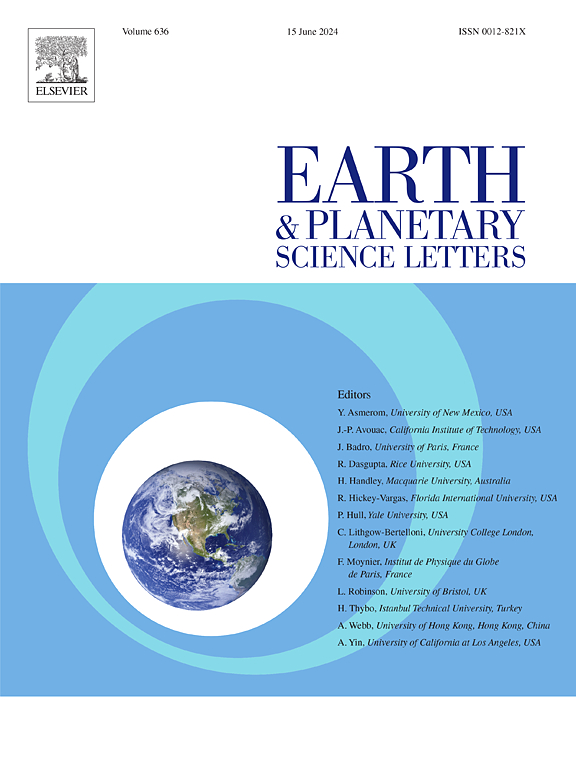The evolution of a Mid-Miocene geomagnetic reversal
IF 4.8
1区 地球科学
Q1 GEOCHEMISTRY & GEOPHYSICS
引用次数: 0
Abstract
The Earth’s magnetic field reverses its polarity non-periodically. Despite the large number of reversals in the magnetostratigraphic record, the geometry of the Earth’s magnetic field and the mechanisms driving reversals are still largely enigmatic. On the one hand, this is because the more readily available sedimentary records lack temporal resolution to record the rapid field changes during a reversal, and on the other hand because the volcanic data records -that may have the necessary temporal resolution- are dependent on volcanic eruption frequency and much more difficult to find. Here we produce a geomagnetic record with high temporal resolution that formed during the shield-building phase on Gran Canaria, Spain. Furthermore, we provide five radio-isotope age constraints for the section containing a mid-Miocene geomagnetic reversal. Our full-vector geomagnetic record is one of the most detailed records of a reversal to date. Surprisingly, we find that in the most reliable part of our record of the reversal the declination reverses only once, while the inclination flips at least five times. Lastly, we interpret this record as a combination of a geocentric axial dipole and non-axial dipole fields and show that the contributions of the non-axial dipole field can be relatively strong.
中新世中地磁反转的演化
地球磁场的极性反转是非周期性的。尽管在磁地层记录中有大量的地磁倒转,但地球磁场的几何形状和驱动地磁倒转的机制在很大程度上仍然是一个谜。一方面,这是因为更容易获得的沉积记录缺乏记录反转期间快速磁场变化的时间分辨率,另一方面,因为火山数据记录(可能具有必要的时间分辨率)依赖于火山喷发频率,很难找到。在这里,我们制作了一个高时间分辨率的地磁记录,形成于西班牙大加那利岛的盾构阶段。此外,我们还提供了包含中中新世地磁反转的剖面的五个放射性同位素年龄约束。我们的全矢量地磁记录是迄今为止最详细的地磁反转记录之一。令人惊讶的是,我们发现,在我们的倒转记录的最可靠的部分,赤纬只倒转一次,而倾角翻转至少五次。最后,我们将这一记录解释为地心轴向偶极子场和非轴向偶极子场的结合,并表明非轴向偶极子场的贡献可能相对较强。
本文章由计算机程序翻译,如有差异,请以英文原文为准。
求助全文
约1分钟内获得全文
求助全文
来源期刊

Earth and Planetary Science Letters
地学-地球化学与地球物理
CiteScore
10.30
自引率
5.70%
发文量
475
审稿时长
2.8 months
期刊介绍:
Earth and Planetary Science Letters (EPSL) is a leading journal for researchers across the entire Earth and planetary sciences community. It publishes concise, exciting, high-impact articles ("Letters") of broad interest. Its focus is on physical and chemical processes, the evolution and general properties of the Earth and planets - from their deep interiors to their atmospheres. EPSL also includes a Frontiers section, featuring invited high-profile synthesis articles by leading experts on timely topics to bring cutting-edge research to the wider community.
 求助内容:
求助内容: 应助结果提醒方式:
应助结果提醒方式:


